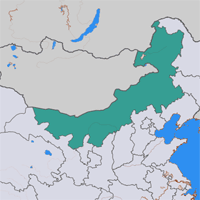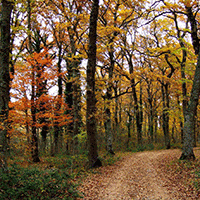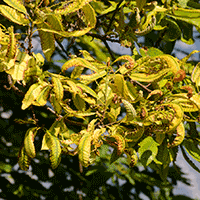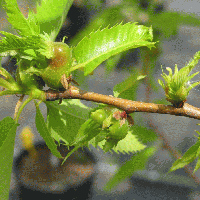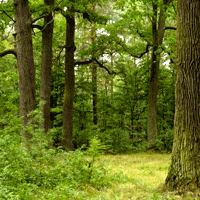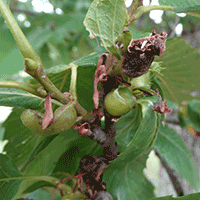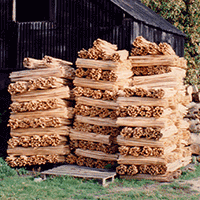
Traditional coppice in South East England: the importance of workforce engagement for development
iForest - Biogeosciences and Forestry, Volume 9, Issue 4, Pages 577-582 (2016)
doi: https://doi.org/10.3832/ifor1809-009
Published: Apr 04, 2016 - Copyright © 2016 SISEF
Research Articles
Collection/Special Issue: IUFRO division 8.02 - Mendel University Brno (Czech Republic) 2015
Coppice forests: past, present and future
Guest Editors: Tomas Vrska, Renzo Motta, Alex Mosseler
Abstract
This paper describes research into the historic importance of the coppice industry, now largely restricted to south east England and the relevance of this to current rural development policy. The economic and social contexts have altered significantly over time with product substitution and changing consumer aspirations, and particularly the availability of alternative fuel sources. Over the last fifty years the “value” attached to coppiced woodlands has shifted away from resource exploitation and towards a greater appreciation of them for wildlife, recreation, amenity and cultural heritage. This has increased wider public awareness of and appreciation for coppicing as a management technique and, consequently rising concern over the reduction in area managed. This was assumed to be due to market failure but attempts to reverse this by creating new outlets failed. The reason for this has been explored by engaging directly with the workforce, both individually and in focus groups. Coppice workers were found to be more numerous, active and enterprising than previously thought, and many were found to be working in family groups servicing traditional markets. They were unaware of concerns about decline in the area coppiced or initiatives to address it. Issues currently affecting their businesses included housing costs, rural crime, harvesting restrictions, loss of yards and training needs. It is concluded that Government policies to promote woodfuel are not likely to succeed without active engagement with the workforce to understand their perspectives and enabling them to participate in policy decisions is recommended.
Keywords
Authors’ Info
Authors’ address
Faculty of Engineering and Science, University of Greenwich, Central Avenue, Chatham Maritime, Medway, Kent, ME4 4TB (UK)
Corresponding author
Paper Info
Citation
Bartlett D (2016). Traditional coppice in South East England: the importance of workforce engagement for development. iForest 9: 577-582. - doi: 10.3832/ifor1809-009
Academic Editor
Tomas Vrska
Paper history
Received: Aug 12, 2015
Accepted: Feb 08, 2016
First online: Apr 04, 2016
Publication Date: Aug 09, 2016
Publication Time: 1.87 months
Copyright Information
© SISEF - The Italian Society of Silviculture and Forest Ecology 2016
Open Access
This article is distributed under the terms of the Creative Commons Attribution-Non Commercial 4.0 International (https://creativecommons.org/licenses/by-nc/4.0/), which permits unrestricted use, distribution, and reproduction in any medium, provided you give appropriate credit to the original author(s) and the source, provide a link to the Creative Commons license, and indicate if changes were made.
Web Metrics
Breakdown by View Type
Article Usage
Total Article Views: 53344
(from publication date up to now)
Breakdown by View Type
HTML Page Views: 43949
Abstract Page Views: 3823
PDF Downloads: 4242
Citation/Reference Downloads: 32
XML Downloads: 1298
Web Metrics
Days since publication: 3540
Overall contacts: 53344
Avg. contacts per week: 105.48
Citation Metrics
Article Citations
Article citations are based on data periodically collected from the Clarivate Web of Science web site
(last update: Mar 2025)
Total number of cites (since 2016): 3
Average cites per year: 0.30
Publication Metrics
by Dimensions ©
Articles citing this article
List of the papers citing this article based on CrossRef Cited-by.
References
Socio-economic analysis of the coppice industry in south east England. Quarterly Journal of Forestry 101 (4): 285-290.
Gscholar
The history of coppicing in south east England in the modern period with special reference to the chestnut industry of Kent and Sussex. PhD thesis, University of Greenwich, UK, pp. 263.
Gscholar
Identifying issues for the coppice industry. Quarterly Journal of Forestry 105 (2): 131- 133.
Gscholar
In pursuit of the truth about coppice woodland management in the south east. Practice 73: 20-21.
Gscholar
New markets for old woods. Conference Report. The Forestry Authority for England HMSO, London, UK, pp. 155.
Gscholar
Crafts in the English countryside: towards a future. Countryside Agency Publications, Yorkshore, UK, pp. 324.
Gscholar
Woodland crafts in Britain (2nd edn). Country Book Club, Newton Abbot, UK, pp. 182.
Gscholar
The rural industries of England and Wales vol. 1: timber and underwood industries and some village workshops. Clarendon Press, Oxford, UK, pp. 239.
Gscholar
Seeing the woods for the trees: a forestry and woodlands framework for the South East. HMSO, UK, pp. 64.
Gscholar
Guidelines for the management of broadleaved woodland. Policy Note no. 5, Forestry Commission Scotland, HMSO, Edinburgh, UK.
Gscholar
Traditional country craftsmen. Routledge, Abingdon, Oxon, UK, pp. 251.
Gscholar
British and Irish hardwoods trust. Report no. 523392, Chestnut Project 2009, Department of Energy and Climate Change, London, UK.
Gscholar
Ancient woodland: its history, vegetation and uses in England. Castlepoint Press, UK, pp. 624.
Gscholar
The coppice for butterflies challenge: a targeted grant scheme for threatened species. British Wildlife 13 (1): 21-28.
Gscholar

